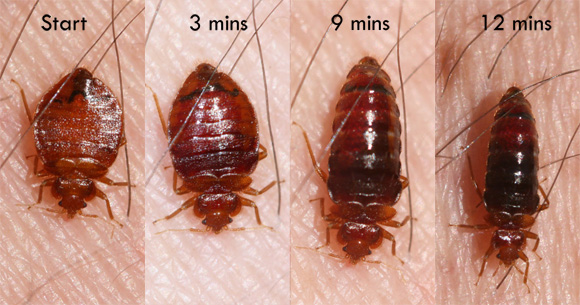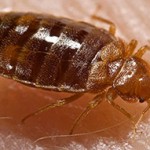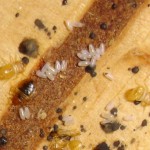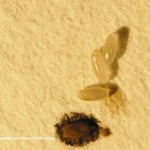Bed Bug Removal
If you think you may have a bed bug infestation, contact us now to quickly get rid of the problem.
We have the experience and expertise with bed bug removal to identify and eliminate your problem. In just a few minutes, your solution can be on the way. SK Pest works with homeowners throughout New Haven, Milford, Orange, Branford and the surrounding area.
Get a FREE quoteHow can SK Pest help you remove bed bug infestations?
- The first step is to correctly identify the bed bug infestation to make certain that it is indeed bed bugs.
- A thorough inspection of the premises to locate bed bugs and their nesting spots is necessary so that cleaning efforts and applications can be focused. Inspection efforts concentrate on the mattress, box springs, and bed frame as well as the cracks and crevices in walls.
- SK Pest will take measures necessary to eliminate the bed bugs. This can include vacuuming, laundering, scrubbing of the mattress to dislodge bed bugs, and repairing cracks in plaster and gluing down loosened wallpaper to eliminate bed bug harborage. Mattress enclosure in a zippered mattress cover is also important.

Bed bugs are considered to be “True Bugs”
Those insects that are capable of piercing tissues and sucking out liquids. Most true bugs are so-called “phytophagous” insects, the bug equivalent of being a vegetarian. These bugs are content to pierce plant tissue and suck out sap for their sustenance. Other bugs are predatory, feeding on other insects or even small vertebrates.
Finally, and most unfortunately, a small minority of these species, like the bed bug, are parasites. Entomologists call these insects obligatory hematophagous animals. In plain English, these bugs feed exclusively on the blood of larger animals. Most of these blood-feeding insects (there are approximately 100 worldwide species of blood-feeders) prey on bats, birds, and small animals.
There are two species of bed bugs that feed on human blood: the common bed bug, Cimex Lectularius L>, and the tropical bed bug, C. Hemipterus Fabr. In the US, the only reported cases of the tropical bed bug have been in Florida. The common bed bug however can be found all over and this minute pest is the reason for all of our bed bug problems here in Connecticut.
The common bed bug, which can survive in cooler temperatures, has a worldwide distribution throughout North America, Europe, and Central Asia. They have been found in all fifty states. The tri-state area has been especially hard-hit with bed bug infestations in recent years because of our population density and mobile population. Although the common bed bug prefers human blood, its will also suck the blood from other animals if necessary, feeding off birds, bats, rodents, and our domestic pets. The professional bed bug exterminators at SK Pest offer bed bug control in New Haven, Milford, Orange, Branford and more.
Identifying Bed Bugs in your Home
Proper identification is the first step in managing bed bugs. They resemble and can be confused with other insects such as:
- Carpet beetles
- Bat bugs
- Chimney swift bugs
- Swallow bugs
Carpet beetle larvae have hairs all over their bodies and the adults have two hard wings. A bed bug has six legs. A bug with eight legs may be a tick or mite. Bed bugs are not overwintering bugs; once they find a location with human hosts, they stay there unless they happen to be hiding on the clothing or personal effects of someone leaving the home. Bed bugs do not use our homes as a refuge from winter temperatures; they use homes because of its human hosts.
Bat bugs can be confused with bed bugs. Bat bugs are also parasitic bugs that require blood to survive. These bugs develop in colonies of roosting bats that are often found in attics or behind building walls. When the bats migrate or are evicted from the building, the bat bugs may move into human living areas and incidentally bite people. Likewise, swallow bugs are parasitic bugs that feed off cliff swallows and human bites can occur in homes where swallows attach and maintain nests. All of these wingless species of insects are generally similar in appearance with the same coloring and size.
Signs of Bed Bugs

The Adults
Unfed adult bed bugs are about the size of an apple seed (about 3/16 to 1/5 inch long). Adults are easily visible to the naked eye. The trick is finding their hiding spots. If the edge of a credit card can fit, so can a bed bug. They are brown to reddish-brown, oval-shaped and flattened. Their flat shape enables them to readily hide in cracks and crevices. The body becomes more elongate, swollen, and dark red after a blood meal.
Think of a drop of blood with legs and that pretty much describes a bed bug after it has fed. Just like a tick, bed bugs plump up after feeding. A bed bug’s antennae point forward and are about half as long as the body, not longer. Its head is broadly attached to its body and below the head are small, stubby, nonfunctional wing pads. They have a beaklike piercing-sucking mouthpart system.

The Nymphs
Bed bugs do not undergo metamorphosis (a pupal stage) between the larval and adult stage. Instead, their young are called nymphs, and resemble the adults to a large degree, the primary difference being their tiny size. They are about 1/16’ (1 mm) long. Unfed nymphs are tan. Adults live for about one year and three or more generations can occur each year.

The Eggs
Newly hatched eggs are small, white, barrel-shaped and sticky. The eggs are coated with a sticky substance so that they will adhere to whatever they are laid on. Female bed bugs lay from one to twelve eggs per day. A female may lay an bed-bug-eggsaverage of 200 eggs in her lifetime, with the potential of up to 500 eggs. Eggs hatch in about ten days on average and nymphs can immediately begin to feed. They require a blood meal to molt and bed bugs reach maturity after five molts.